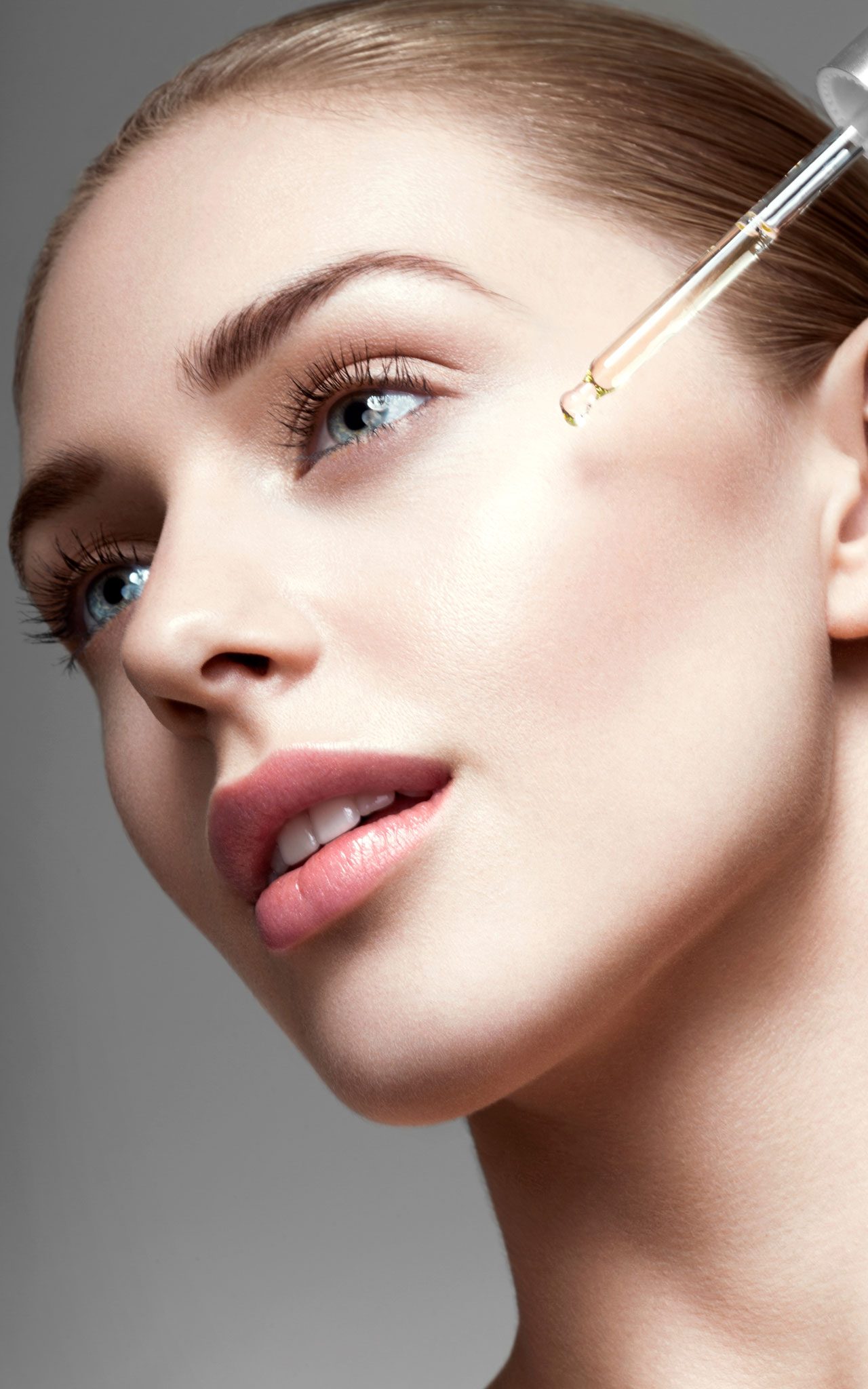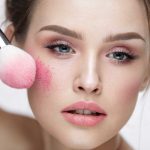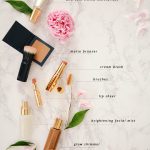Exploring your favorite makeup look for spring, summer, winter or fall is one thing. But layering skincare products under your makeup? Probably not so easy. Especially if it causes “pilling.”
Pilling occurs when skincare products don’t set on the skin and turn into small flakes or “pills” (like those annoying lint that always ruin your favorite sweater). It may look like flakes on dry skin, but it’s usually a sign that the product combination isn’t blending well or isn’t being fully absorbed by the skin. However, there isn’t a specific cause for pilling, so preventing it can be tricky.
Read on as we break down the potential causes of pilling and how to avoid it.
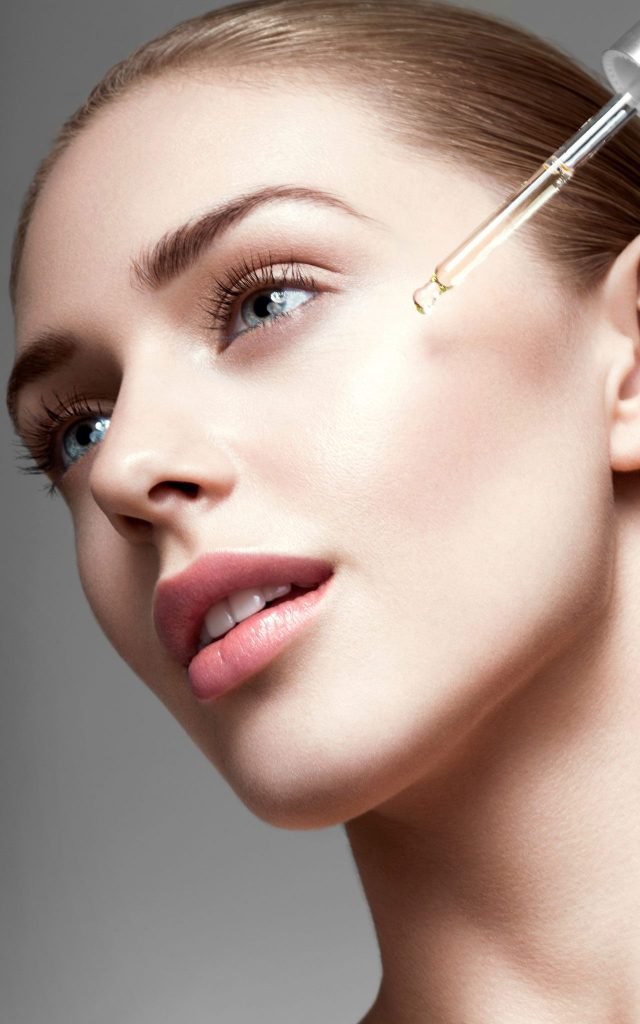
What causes pilling?
Finding pilling after careful makeup application? Common causes of pilling include using too much product or specific ingredients in the product.
Let’s catch the culprits that cause your favorite makeup to pill:
1. Too much product
Using too many moisturizers, creams, or serums in your skincare routine can lead to pilling. All of these products are designed to be absorbed by the skin, so using too much product at once can overwhelm the skin. (Think of a sponge that can’t absorb more liquid. This is especially true when applying makeup along with skincare products, so remember that “less is more” is the golden rule. (Of course, this doesn’t apply to sunscreen!) .
2. Rushing through your routine
Have you ever slept through your alarm and had to complete your entire morning skincare routine in 10 minutes, only to find your skincare peeling off later in the day? (Oversleepers of the world, we feel your pain!) Pilling can be a sign that skincare products are mixing together before they have a chance to set on the skin. For example, a moisturizer may need to sit for a few minutes before applying foundation. So be sure to give your products enough time to work at their best.
3. Formulation and ingredients
Some cosmetic ingredients (e.g. talc) stay on the surface of the skin and tend to swell after absorbing oils from the skin and makeup¹, which can also lead to caking. Some people also notice pilling when using products that contain silicone, but this doesn’t necessarily mean you need to throw out your favorite primer. Keep in mind that whether or not a certain product pilling depends on the overall formula of the product and your skin.
How to Layer Skincare Products
While the best order to layer your skincare products will vary depending on the specifics of your skincare routine, in general, you’ll want to take into account the consistency of your products and apply them in order, from lighter (e.g., a liquid serum) to heavier (e.g., a thick moisturizer). For example: if you apply a serum with a watery consistency before applying an oily or heavy moisturizer, the serum may not be absorbed efficiently by the skin.
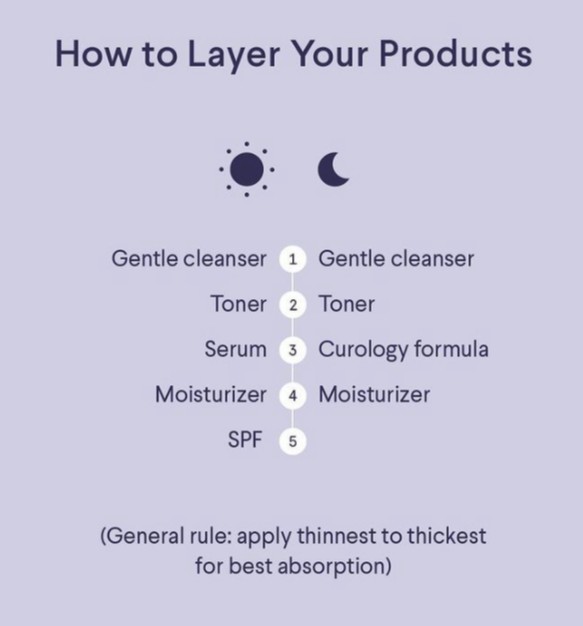
If you’re pressed for time, it’s best to skip non-essentials like eye creams or whitening masks and just use basic skin care products. What’s the best way to prevent pilling? Keep your skincare routine simple – see below for our suggested AM and PM skincare routines. If you add other products to your skincare routine, remember the general rule of thumb is to go from thin to thick.
Morning routine
Cleansing. The first part of your morning skincare routine should always be your favorite cleanser. A gentle, moisturizing cleanser is an important part of your morning skincare routine.
Moisturize. Apply a moisturizing moisturizer before applying sunscreen, taking care to choose a product that is labeled non-clogging, non-comedogenic or non-comedogenic.
Apply SPF sunscreen. You probably hear it all the time (at least from us), but even so, we’ll say it again: SPF is the key to skin care. Protect your skin from UVA and UVB rays by regularly applying a broad-spectrum sunscreen with SPF 30 or higher.
Nighttime Routine
Remove makeup (if you are wearing makeup). To begin your nighttime routine, start by removing your makeup thoroughly. You can try using a micellar water (like our Micellar Makeup Remover) or an oil-based makeup remover (like Makeup Remover Cream or Makeup Remover Oil).
Cleansing. Just like in the morning, the right cleanser will remove the day’s dirt, sweat and oil.
Care. If using a skin care product, such as Curology Customized Formulas, give it enough time to soak into the skin after application.
Moisturize. Skin rejuvenates at night,² so it’s important to hydrate and keep your skin healthy while you sleep. Gently press your moisturizer or night cream to help your skin absorb all the moisture.
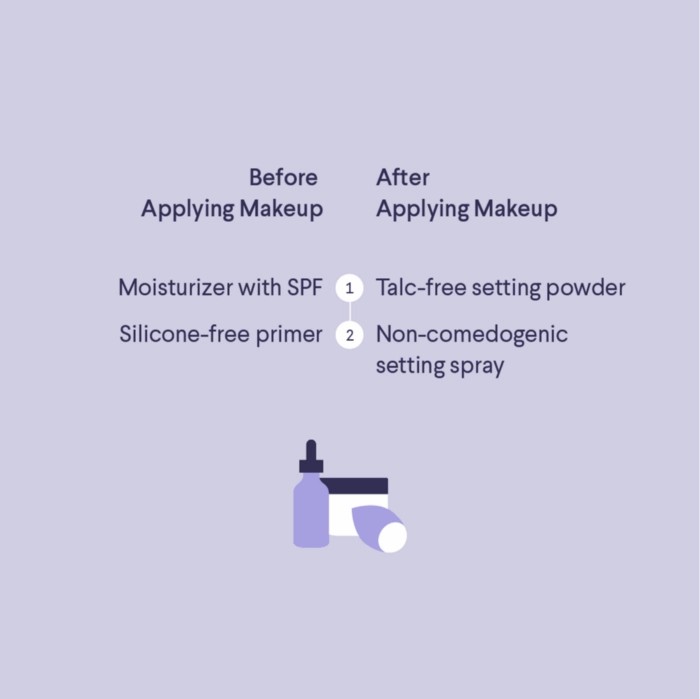
To scrub or not to scrub?
Dead skin cells mixed with products can also cause pilling. Using a physical or chemical exfoliator helps to remove dead skin cells, which also helps to minimize pilling. However, exfoliating products are generally not suitable for daily use; once or twice a week is sufficient. Excessive exfoliation is not good for the skin as it can cause skin irritation, so take it easy and scrub gently!
Soothing Dry Skin
Another common cause of pilling is dry skin. Sticking to your moisturizer will help prevent this from happening, and remember to always give your moisturizer enough time to fully work its way into your skin.
While sticking to your moisturizer, it’s also a good idea to allow your skin enough time to absorb the product. Think of your skin as a sponge waiting to soak up all the benefits of your moisturizer.
A good moisturizer will undoubtedly help to retain your skin’s natural moisture. But with so many options to choose from, what exactly should you look for? Moisturizers may contain a number of different ingredients, making it especially important to find the right combination for your skin.
Ingredients to avoid
No matter how hydrated your skin is, why does it still break out? The answer may lie (you guessed it!) in your makeup ingredients. Just like in science class, the ingredients in your makeup probably don’t mix well with each other (okay, maybe it’s not like a chemistry lab, but you get the point).
Silicone Silicone is found in many different foundations and primers because it gives a smooth, almost airbrushed look. It achieves this smoothing effect by adhering to the surface of the skin, but unfortunately, it can cause buildup or pilling if certain products are used on top of it.
Iron Oxide. Another ingredient that can cause pilling is iron oxide, which is commonly used to create synthetic colors. You may find it in tinted sunscreen or concealer. Iron oxide may help protect your skin from blue light,⁴ but mineral sunscreens can feel greasy and may not mix well with other products.
Fluorescent stones. ⁵ One potential cause of pilling can be too much heavy product applied to the face, so be sure to check if your favorite foundation or highlighter contains this pilling-causing culprit.
Wait for the product to absorb
One way to prevent pilling is to let your skin rest for a few minutes between each layer of product. This is especially important when you’re applying full face makeup. In our experience, it’s best to wait 15-30 minutes after moisturizing before applying foundation or primer. If you are using a primer, wait another five minutes or so before applying foundation.
Makeup Tips for No Pilling
Because the fewer products you have, the less chance of pilling, simplifying your makeup routine will definitely help. Using the right products can prepare you for your makeup look.
1. Silicone-free primers
Some people find that products containing silicone cause pilling because they adhere to the surface of the skin. If this sounds familiar, you may want to avoid primers with ingredients ending in “-cone.” You may also want to forgo primers labeled “pore-filling” or “blurring” in favor of primers labeled “moisturizing.”
2. Talc-free setting powders
Keep in mind that talc sits on the surface of the skin and absorbs oil, which can lead to caking. Unfortunately, talc is also the main ingredient in many setting powders (including drugstore and high-end products). Instead, you can try setting powders that contain mica, which tends to blend more easily with the skin.
3. Non-comedogenic setting sprays
If you don’t like the texture of setting powders, try a setting spray. Setting sprays create a protective film over your makeup to help keep it in place. Simply spray your face once or twice and you’re good to go! Some setting sprays can also be used under makeup to prime your skin.
Why is the correct order of skincare and makeup important?
When applying skincare products, you want to make sure that each product you use on a daily basis has enough absorption time so that each product can be fully utilized. In addition, making the most of your skincare products will help your makeup go on smoothly.
In short, when layering makeup, never forget this golden rule: Less. is more! Using a thin layer of makeup helps prevent makeup buildup that can lead to pilling.
